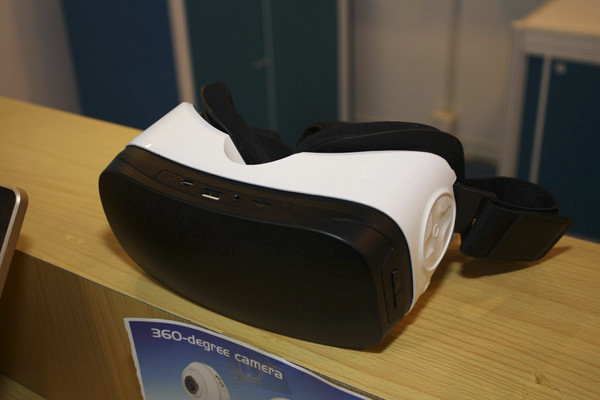Other Day I had a look and fiddle with the New Virtoba Head X5 set with BT Controller V1 and what I thought was some packing is the Virtoba V2 cardboard model,
how embarrassing.(more on that later)
Virtoba X5 suits phone sizes from 4.7 inches (119.4mm) to 6.2 (157.5mm) approximately.
Unit is packed very well, and looks pretty groovy, plenty of adjustment found for Big heads and Small with the adjustable Velcro straps, also has built in headphones and with 3.5mm plug to connect to your phone..



Not too heavy, around 400 gm, plenty of soft sponge around facial area,

Wheel to adjust the PD, button in front to release cover to gain access to phone bay

Adjustments for FD Focal Distance are on the side and PD Pupil Distance on the top, normally I need to wear glasses for reading and up close, but found the image quality very sharp, clear without my glasses, things were still a bit blurry until I peeled of the protection film on the inside of headset.
.gif)

Silver adjusting knob each side to adjust the Focal Distance, and Headphone can slide out to fit over your ears

I have a old S3 Samsung (135mm) should be fine, and was, resolution maybe a little normal, new phones bigger screen I feel would look sharper and give a better experience.
(Excuse for new phone maybe) and 3.5mm plug to connect to your phone..


Underneath we have the OK Button/Enter/Touch screen as they call it and the volume control.
Impressions so far pretty good. Solid unit, features to match. This may be fun or what have I got myself into.


Virtoba V1 Controller, a small hand held device suitable for both Android and Apple Phones
BT connection easy to Pair, power on hold button a few seconds done.
Joystick control to move mouse about and 6 other buttons
Power on/off and hold to pair and numerous other functions that it can put into, we have a Music mode, Mouse mode, Self timer mode and finally Game mode, I found it ok to use while doing as intended but if the game/app exits while in VR mode off with the glasses and rerun app/game also brain to hand co-ordination appears to be an issue I have, but for the avid Joystick twiddler it would be no doubt easy. Unit requires 2AA Batteries.

Ran up the Google Cardboard app first and looked at the demo and a few other bits very easy using the Touch Screen button/Enter supplied on the headset, as mentioned brain to hand co-ordination will need some work to use controller, I will wait a bit before and practice before I try Killer Death Zombies or the some other crazed stunt game.
Image was clear and sharp, better with a newer phone I think it would look excellent I feel, very easy to use with the basic setting, now to attempt to master the hand controller or any other device I can plug into the phone, game controller etc.
Audio quality is ok from the attached headset, not to snug over ears, maybe larger headset padding, but these will be fine for doing games, I don’t need quality audio to hear the screams of oncoming zombies and the quality of the audio is not going to benefit my pending doom in any of these games.
So as I delve into the very singular world of VR, I will Music, Movies and a few games and see what this is all about.
Lots of new things on the horizon for all these headsets,
I feel the complete with built in monitor would be the go, but for the 400~500 buck for the top of the line units, this will be an excellent starting point.
If Interested
$10 off coupon GDCVBHAZ
Geekbuying










Comment